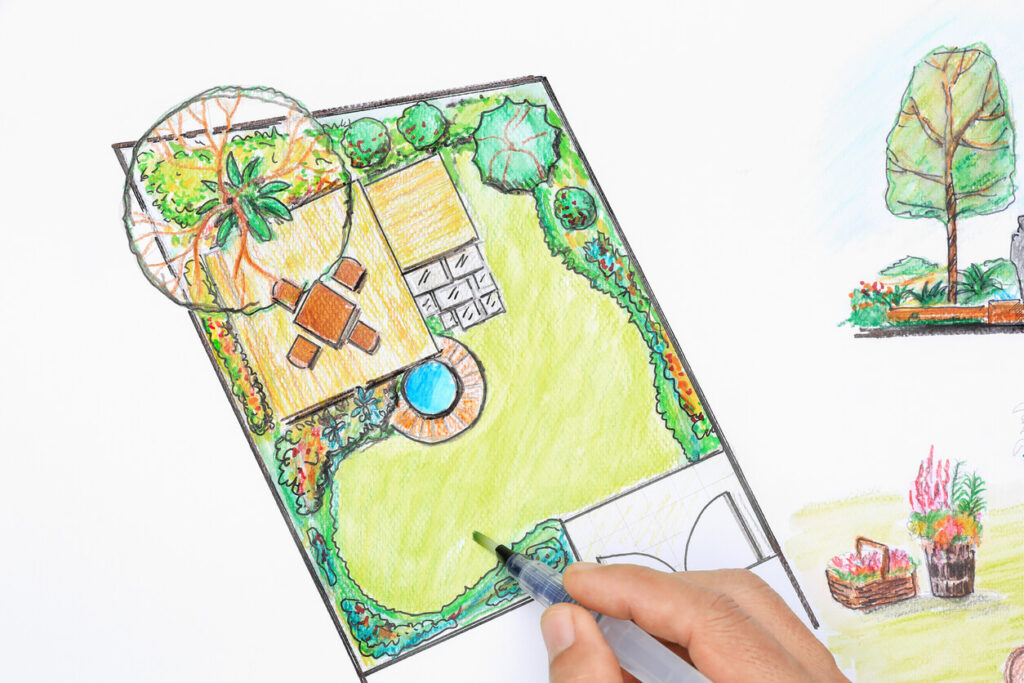Opting to reuse pots and containers for your garden this year is an excellent means of reducing waste and saving some cash. Many experienced gardeners swear by the practice of thoroughly cleaning and sterilizing their containers each season and starting anew with fresh organic soil. This will help avoid any potential risk posed by harmful pests or fungi that may have over-wintered in your containers. Here are some good cleaning practices to consider incorporating into your spring container gardening routine.
Thoroughly Clean and Sanitize Containers
Many plant diseases and pests can overwinter in the small amount of soil that remains in your container. Harmful fungi, bacteria, or eggs often aren’t easy to spot, but some can leave survival structures and spores right on the surface. Soil-borne pests can rise again, coming out of dormancy to infect your new plants and cause trouble. Insects and other plant parasites may also wait in debris stuck on your pots. Common examples include Pythium (a common plant pest that causes root rot) and Rhizoctonia (a genus of fungi that can cause root rot, damping off, and leaf blights).
Cleaning Solution Recommendations
You won’t need any complex chemicals to get the job done! Household bleach is one of the easiest, least expensive, and most effective ways to sanitize your reused potting containers. Regular liquid dish soap helps to loosen stuck deposits and dissolve salts and residues. Other household cleaners can also be effective if you have only a few pots to clean. Common household general purpose cleaner sprays like you would use on your counter or bathroom may work fine, but bleach is the standard method.
Alcohol solutions like rubbing alcohol are excellent for sterilizing pruning tools between plant tasks, but the volume needed for sanitizing pots isn’t practical.
Considerations for Different Materials: Terracotta vs. Plastic
Different materials, like terracotta and plastic, require different considerations when sanitizing. Plastic pots and glazed pottery containers are non-porous, meaning they won’t soak up water. In contrast, terracotta and clay containers ARE porous, meaning they will soak up water. Terracotta pots will benefit from a longer soak time than plastic or glazed pottery containers. A diluted household bleach solution will work for both!
How to Properly Sanitize and Reuse Garden Containers
If you’re planning on reusing your garden containers, there are steps you can take to ensure they’re properly sanitized. You can do this in your kitchen sink or bathtub if you have only a few small containers, but if you have many containers to sanitize, it’s best to set up outside. Don’t forget to wear clothes that you don’t mind getting wet and dirty!
- To start, gather all the necessary supplies. Depending on the type of container, you may need a tub, sponges, dishcloths, a nylon brush, an old toothbrush, gloves, a wire brush, and bleach.
- Remove any old plant residues, stuck-on soil, and mineral deposits from the containers. For plastic pots, you might need a scrubby pad, while a toothbrush works great on seed trays. If you’re dealing with terra cotta, it can handle a wire brush if needed. Use warm water and dish detergent to give the containers a thorough scrubbing until all the soil, mineral, salt deposits, and other debris are removed.
- Next, prepare a 10% bleach solution by mixing 1 part bleach with 9 parts water. Be careful when pouring bleach, as the fumes can be harmful. Follow all safety precautions listed on the label. Doing this step outside can also help with the strong, irritating bleach odor. For example, if you need three gallons of solution, you’ll need about 1 ¼ quarts of bleach and 10 ¾ quarts of water.
- Soak the pots in the bleach solution for at least ten minutes, but 30 minutes is better. Swish and shake the pots in the solution to dislodge any air bubbles hiding in crevices. Air bubbles can prevent the bleach solution from sanitizing the entire surface. Ensure that no part of the pots are left above the bleach solution. Use a heavy screen and a weight to hold plastic pots down since they tend to float.
- Once done, remove the pots from the solution and rinse them thoroughly with clean water, then allow them to air dry. Keep sanitized containers away from dirty ones to prevent re-contamination.
Sanitizing your reused pots and containers ensures that you’re giving your young plants the best possible start and can prevent costly losses. Remember to use new potting mix to avoid reusing contaminated potting media from last year. Taking these steps will help protect your investment in time and money with your container garden, and it will become just another routine gardening task!






